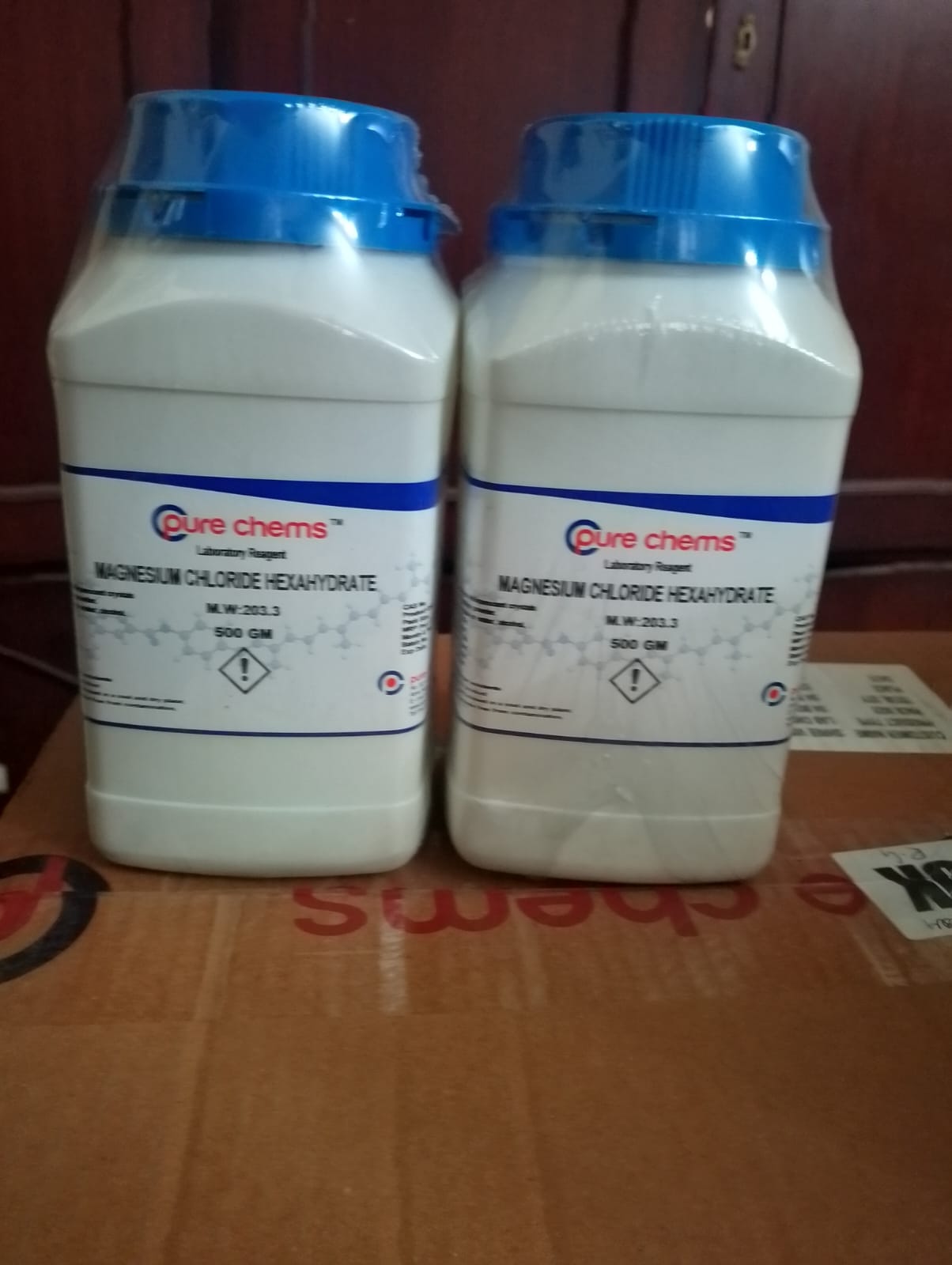
2024-08-08T13:03:02
Magnesium chloride can be extracted from brine or sea water. In North America, it is produced primarily from Great Salt Lake brine. In the Jordan Valley, it is obtained from the Dead Sea. The mineral bischofite (MgCl2·6H2O) is extracted (by solution mining) out of ancient seabeds, for example, the Zechstein seabed in northwest Europe. Some deposits result from high content of magnesium chloride in the primordial ocean.[3] Some magnesium chloride is made from evaporation of seawater. In the Dow process, magnesium chloride is regenerated from magnesium hydroxide using hydrochloric acid: Mg(OH)2(s) + 2 HCl(aq) → MgCl2(aq) + 2 H2O(l) It can also be prepared from magnesium carbonate by a similar reaction. Structure MgCl2 crystallizes in the cadmium chloride CdCl2 motif, which features octahedral Mg centers. Several hydrates are known with the formula MgCl2·nH2O, and each loses water upon heating: n = 12 (−16.4 °C), 8 (−3.4 °C), 6 (116.7 °C), 4 (181 °C), 2 (about 300 °C).[4] In the hexahydrate, the Mg2+ is also octahedral, being coordinated to six water ligands.[5] The octahydrate and the dodecahydrate can be crystallized from water below 298K. As verified by X-ray crystallography, these "higher" hydrates also feature [Mg(H2O)6]2+ ions.[6] A de

Have a question? Ask here!
Required fields are marked *